Welcome, reader, to our Winsapsvc “Virus” removal guide. The following instructions will aid you in removing the unwanted software from your Windows PC.
Do you like surfing the web? Probably yes, but what you may not like is the constant flow of nagging advertisements that pop up out of nowhere and keep messing with your browsing activity by constantly interrupting you. If this is what you have been experiencing lately, you should know that the intrusive ads and pop-ups may not come only from the sites you visit, but they may also be generated directly from your Chrome or Firefox browser with the help of specific software called adware. A program of this type named Winsapsvc may be the most probable reason why you are seeing so many intrusive advertisements on your screen and the tricky thing here is that you have probably installed it on your PC without realizing it. The good news is that there is a simple and effective way to uninstall this program and save yourself from the ads. Below you will see a removal guide, which is specially created to help you find and remove Winsapsvc “Virus” from your computer as well as a brief but useful description of this adware and the way it operates. We suggest you familiarize yourself with it first and then follow the removal instructions.
What is causing you the disturbance?
Adware is the general term that unifies all types of software, which are specially developed to display advertisements on the user’s screen. Winsapsvc also falls into this category because this program is known for its ability to generate a huge amount of ads, pop-ups, banners, boxes and tabs in all shapes and sizes. Usually, it is used as an effective online advertising tool, which not only exposes users to dozens of advertisements, but accumulates profit for its developers through the famous Pay-Per-Click method. And since this remuneration method is involved, every click on the ads matters, which naturally stimulates the developers to display as many of them as possible. However, this ad-displaying activity may cause some disturbance and browsing interruptions to the users, who are affected by the adware, which is the main reason why they seek ways to remove it.
How is Winsapsvc installed without notice?
When you download some desirable software from the web, let’s say from a torrent site, file sharing platform, or freeware site, you may get adware like Winsapsvc along with it. It is usually bundled inside the installation package and when you run it, especially if you skip reading the EULA and randomly click on the standard installation option, it will automatically get installed on your computer without notice. Many users feel tricked by the adware this way but in fact, they can easily prevent it from getting installed only if they click the “advanced” option instead of the standard one. In some installers it can be named also “custom” or “manual” and we advise you to always look for this option because this is the most detailed one, which will enable you to prevent any potentially unwanted software from settling inside your system.
Is Winsapsvc a “Virus, really?
It is not surprising that some people refer to Winsapsvc as a virus, especially when it takes over their browser and aggressively starts to display unwanted advertisements on their screen. But luckily, this is just a wrong first impression, which this adware gives to users who are not really familiar with its purpose and the way it operates. This software does not attempt to corrupt your system nor has it been created with such idea. What it does is it simply floods your screen with ads in the hope of you clicking on them and generating income for its developers. You cannot expect a program like Winsapsvc to encrypt your files like the notorious Ransomware does, nor to infect other machines and replicate like a virus. However, there are still some potentially undesired activities that may make users wish to uninstall the adware and here are some of them:
- Interrupting online activity with irrelevant, undesired or unknown advertising content.
- Tracking the user’s browsing history and searches and collecting browsing related data.
- Transmitting the collected traffic data to third parties.
- Redirecting web searches and landing you on suspicious web pages or misleading links.
- Consuming system resources and causing system lags.
- Eating up internet data to display undesired advertisements.
Uninstalling the adware will surely save you from all these potentially unwanted activities, especially if you feel that they may heavily interfere with your normal browsing habits and online experience. Bear in mind, though, that finding and removing the right adware files may need your full attention. For that, we advise you to closely follow the instructions in the removal guide below and double check your system with the professional Winsapsvc removal tool. This way you will ensure the complete removal of all ad-generating components and you will effectively save yourself from the nagging ads.
Winsapsvc “Virus” Removal
I – Uninstallation
- Use the Winkey+R keyboard combination, write Control Panel in the search field and hit enter.

- Go to Uninstall a program under Programs.

- Seek the unwanted software, select it and then click on Uninstall
- If you are unable to spot Winsapsvc, search for any unrecognized programs that you do not remember installing on your PC – the unwanted software might disguise itself by going under a different name.
II – Safe mode and revealing hidden files
III – Cleaning all your browsers
- Go to your browser’s icon, right-click on it and select Properties.

- Go to the Shortcut tab and in the Target make sure to delete anything written after “.exe”.

- Now, open your browser and follow the instructions below depending on whether you are using Chrome, Mozilla or IE.
- Chrome users:
- Go to your browser’s main menu located in the top-right corner of the screen and select Settings.
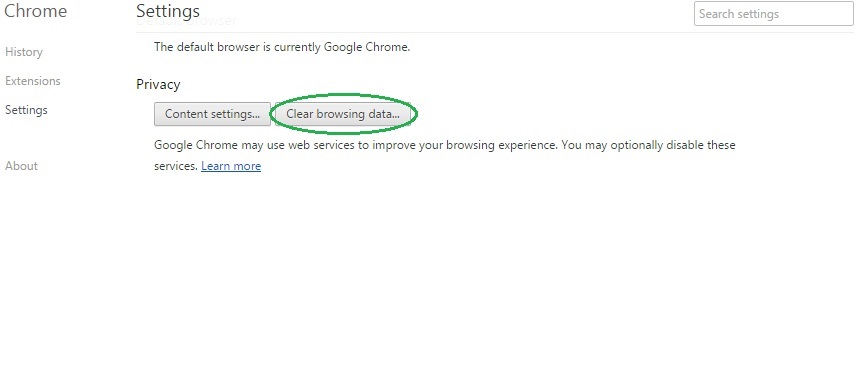
- Scroll down, click on Show Advanced Settings and then select Clear browsing data. Just to be sure, tick everything and clear the data.
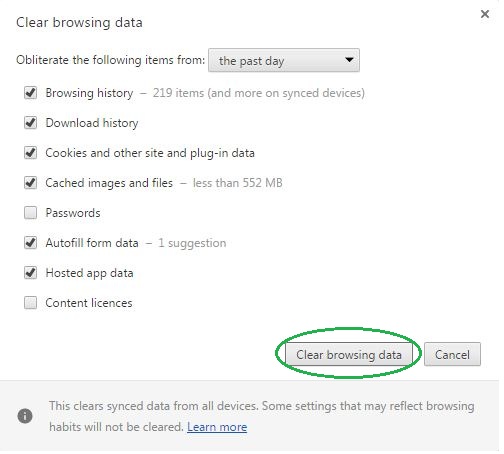
- Now, in the left pane, go to Extensions and look through all extensions that are integrated within your browser. If you notice any suspicious add-on, disable it and then remove it.
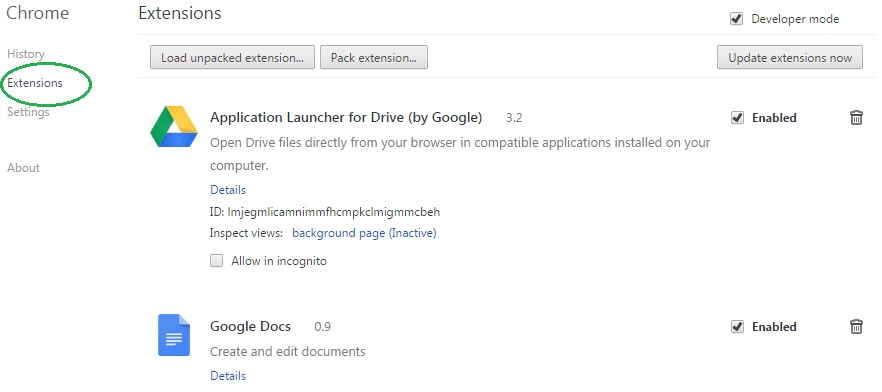
- Firefox users:
- Similarly to Chrome, go to the main menu and select Add-ons and then Extensions.
- Remove any suspicious browser extensions that you may have even if they do not have the name Winsapsvc on them.
- IE users:
- Go to Tools and select Manage add-ons.

- Click on all add-on types from the left pane and check if there is anything suspicious in the right panel. In case you find anything shade, make sure to remove it.
IV – Removing Shady processes
- Go to your start menu, type Task Manager in the search field and from the results open View running processes with Task Manager.

- Thoroughly look through all processes. The name Winsapsvc might not be there, but if you notice any shady looking process that consumes high amounts of memory it might be ran by the unwanted program.
- If you spot the process ran by Winsapsvc, right-click on it, open its file location and delete everything in there. Then go back to the Task Manager and end the process.

V – DNS check
- In the start menu search box write View Network Connections and open the first result.
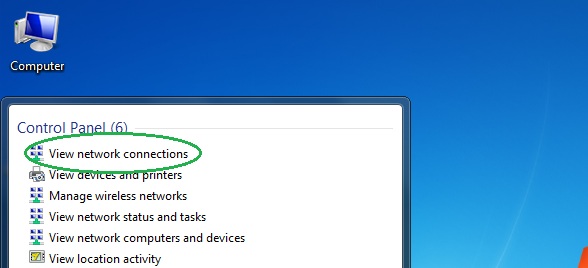
- Right-click on the network connection you are using and go to Properties.

- Select Internet Protocol Version (TCP/IPv4) and click on Properties.

- If Obtain DNS server addresses automatically is not checked, check it.
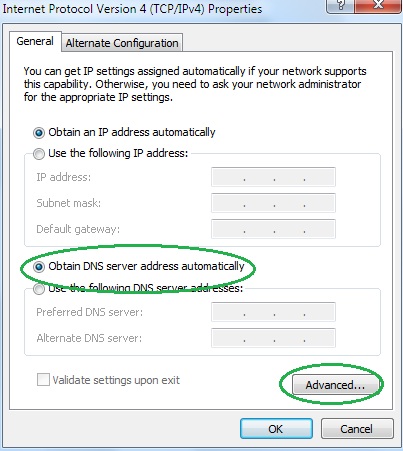
- Go to Advanced and select the DNS If there is anything in the DNS server addresses field, remove it and click OK.

- Click OK on the rest of the opened windows.
